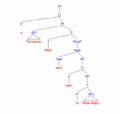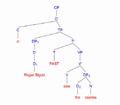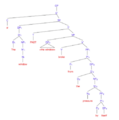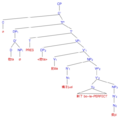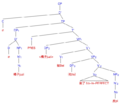Voice (grammar) facts for kids
In grammar, the voice of a verb shows how the action of the verb relates to the subject of the sentence. In English, there are two main voices: active and passive.
When a sentence is in the active voice, the subject is the one doing the action. It's like saying, "The subject does something."
- Active voice example: Jane chose the furniture. (Jane is the subject, and she is doing the choosing.)
When a sentence is in the passive voice, the subject is the one receiving the action. It's like saying, "Something is done to the subject."
- Passive voice example: The furniture was chosen by Jane. (The furniture is the subject, and it is receiving the action of being chosen.)
The active voice is used much more often than the passive voice in everyday speaking and writing.
Contents
Understanding the Passive Voice
How to Form the Passive Voice
To make a sentence passive, you usually move the object of an active sentence to become the subject. The verb changes to a form of "to be" (like is, was, are, were) plus the past participle of the main verb.
- Active: The dog chased the ball. (The ball is the object)
- Passive: The ball was chased by the dog. (The ball is now the subject)
Only verbs that can have an object (called transitive verbs) can usually be changed into the passive voice.
Why We Use the Passive Voice
Sometimes, we use the passive voice because it changes the focus of the sentence. Instead of focusing on who did the action, we focus on what happened or who received the action.
Here are some reasons why people use the passive voice:
- When we don't know who did the action:
- The store was robbed last night. (We don't know who robbed it.)
- A package was left on the steps. (We don't know who left it.)
- When the receiver of the action is more important than the doer:
- Julio was hit by a car. (The focus is on Julio and what happened to him, not necessarily on the car or driver.)
- The robber was arrested this evening. (The focus is on the robber being caught, not on who arrested them.)
Images for kids
See also
 In Spanish: Voz gramatical para niños
In Spanish: Voz gramatical para niños


